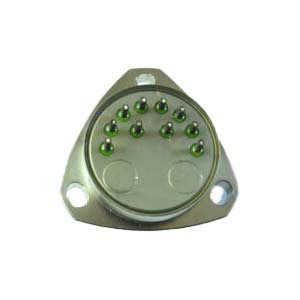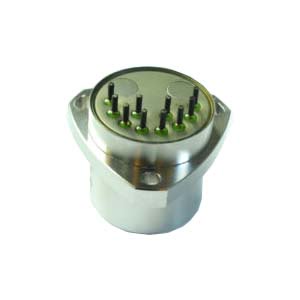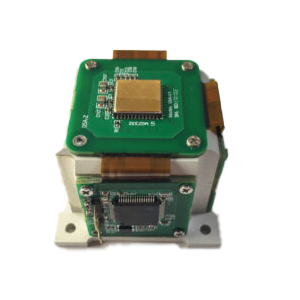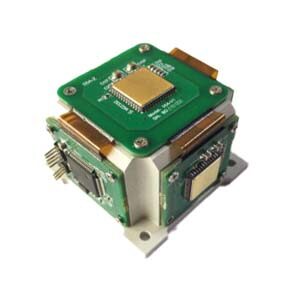Working principle
The working principle of accelerometers is based on the relationship between mass and force. It uses the acceleration generated by the mass under the force to measure the acceleration of the object. Common accelerometers use micro electromechanical systems (MEMS) technology to measure the acceleration of an object through tiny force sensors.
The main parameters of the accelerometer. Taking ERICCO's quartz accelerometer ER-QA-03A as an example, the meaning of the main parameters is briefly described.
Measurement Range
Refers to the acceleration range that the accelerometer can measure. The larger the value, the stronger the ability to measure the magnitude of acceleration. The measurement range should be reasonably selected for different applications. Because the measurement range is large, the sensitivity will be correspondingly reduced, unless a higher precision is selected.
For the ER-QA-03A series, the measurement range of ER-QA-03A1 ER-QA-03A2 ER-QA-03A3 is ±50g.
Bias
It specifies the device output when the measurement axis acceleration is 0g. It can be given as a voltage value (analog output device), or in LSB (digital output device), or in mg. It can be understood as a static error that does not fluctuate over time. The user can directly subtract 0g Bias from the measured value for compensation. For example ER-QA-03A1 bias is ≤ (±3)mg.
There are usually several representations:
Deviation from ideal value at 25°C
The change of 0g offset with temperature, that is, how many mg of output change for every 1°C change
Total offset including all errors
Which representation method is used depends on the application market defined by the chip and what its traditional definition method is.
Noise (NOISE)
The noise of an accelerometer refers to random fluctuations in its output.The power spectral density of the noise output is generally given in the form of µg/√Hz. The higher the bandwidth, the greater the noise. The bandwidth is roughly equal to half of the output data rate. Therefore, the higher the output rate is set, the greater the noise.
The total noise is determined by the noise density and bandwidth (BW): total noise=noise density*SQRT(1.6*BW). The appropriate bandwidth should be selected for different applications to reduce the total noise. Usually the various movements of people are at 50 to 100 Hz; the tilt detection is about 5 Hz; the impact detection is >1 kHz. The characteristics of the noise determine the accuracy of the device




Output data rate and bandwidth
The output data rate (ODR) refers to the amount of information (bits) transmitted on the channel per unit time. The bandwidth is 1/2 of the ODR.
Sensitivity
Sensitivity refers to the relationship between the voltage or digital signal output by the accelerometer and the actual acceleration. It is usually expressed in mV/g or LSB/g (the unit of minimum discernable acceleration). The higher sensitivity means the accelerometer is able to measure acceleration more accurately.
Temperature stability
Temperature stability refers to the output stability of the accelerometer at different temperatures. It is usually expressed in mV/℃ or %FS/℃. Better temperature stability means that the accelerometer can provide more consistent measurement results under different temperature conditions.
Accelerometer selection and use precautions
In the selection and use of acceleration timing, the following aspects need to be noted:
Environmental condition
The performance of the accelerometer may be affected by environmental conditions. For example, factors such as temperature changes, vibration, and humidity can affect the accuracy and stability of an accelerometer. In the selection of acceleration timing, it is necessary to consider the environmental conditions to which it is adapted.
Dynamic range
The dynamic range of the accelerometer should match the requirements of the application. If you need to measure a large range of acceleration changes, then you need to choose an accelerometer with a large measurement range.
Sampling rate
The sampling rate of an accelerometer determines the highest frequency it can measure. When selecting acceleration timing, you need to consider the highest frequency range required for the application and select an accelerometer with a sufficiently high sampling rate.
Noise level
Noise levels are important for some high-precision applications. Lower noise levels can provide more accurate measurement results. When selecting acceleration timing, it is necessary to pay attention to whether the noise level meets the application requirements.
Power supply and interface
Accelerometers typically require a power supply and communicate with other devices through some kind of interface. When selecting an acceleration timer, you need to consider its power and interface requirements and ensure that it is compatible with the target system.
More Technical Questions
1.How to Improve the Impact Resistance of Quartz Accelerometer
2.Study on the Stability of Quartz Accelerometer Head
3.What is the Quartz Accelerometer Digital Closed Loop Servo Circuit?
4.Calibration Method of Accelerometer
5.How do parameters affect the performance of the quartz accelerometer?
6.What Effect Does Temperature Have on Quartz Flexible Accelerometer?
Products in Article







